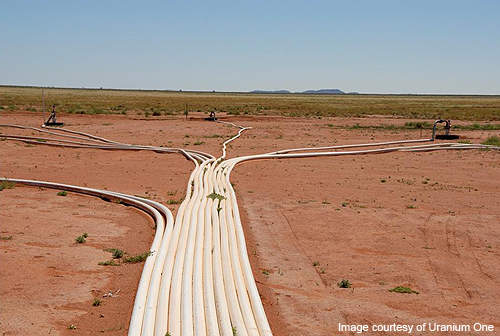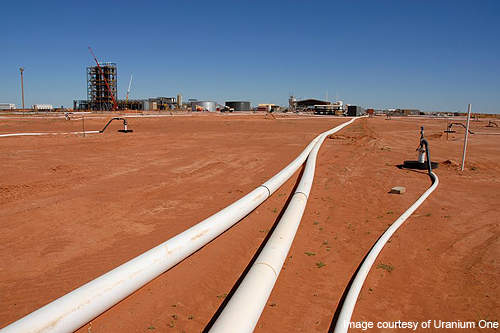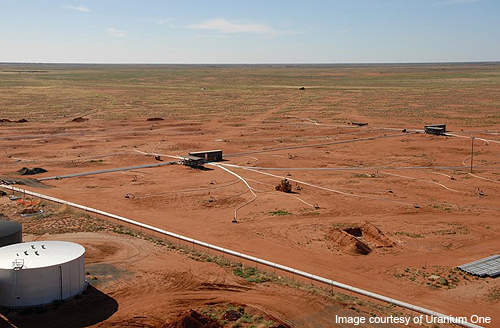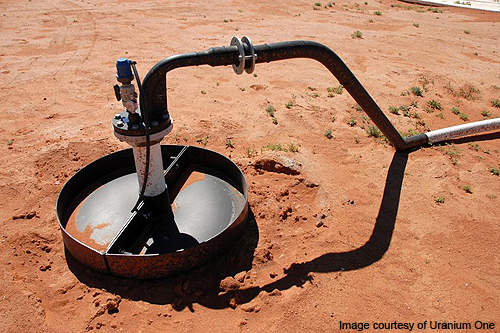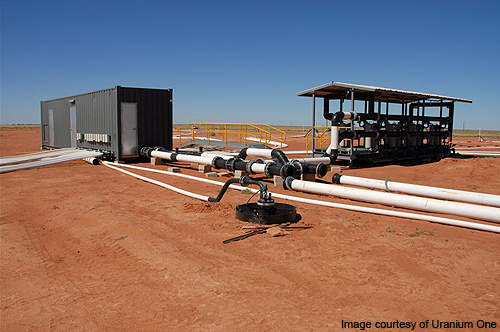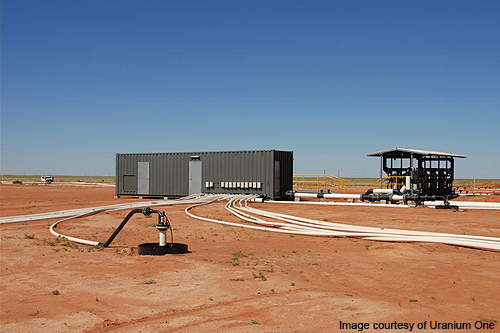The Honeymoon uranium mine is situated 75km north-west of Broken Hill city in Southern Australia. It is an advanced in-situ recovery (ISR) project owned and operated jointly by Canada based Uranium One (51%) and Japan based Mitsui (49%). Mitsui acquired a 49% stake in the mine in 2008.
Field leach trials of the mine took place in 1998-2000. The delineation and feasibility study was carried out between 2005 and 2006.
Ion exchange and pulsed column trials were completed in September 2006 and December 2006 respectively.
Ausenco Minerals was contracted in December 2008 to engineer, procure, build and supervise the processing plant at the mine.
Ertech was awarded a $6.5m subcontract by Ausenco in April 2009 to build four earthworks ponds of 35,000m³ volume, ground slabs, bund walls, tank plinths, roads and drainages. The contract work was completed in September 2009.
Uranium One awarded a $5.2m contract to E&A in November 2009 to supply and install electrical equipment and instrumentation at the mine. E&A was also contracted in September 2009 to execute structural, mechanical and piping works at a cost of $17.4m.
Enviro Voraxial Technology was contracted in March 2010 to supply and install a Voraxial 1000 Separator at the mine for excerpting aqueous solvent stream from the uranium extraction.
Geology and reserves of Australia’s Honeymoon mine
The uranium deposits at the mine are hosted in the Yarramba Palaeochannel of the Eyre formation belonging to the tertiary age group.
The palaeochannel comprises three sand members: lower most basal sand, middle sand and upper sand which are segregated by clay layers.
The mine is estimated to contain 1.2 million tons (mt) of indicated reserves graded at 0.24% uranium.
Mineralisation of Australia’s Honeymoon uranium mine
The mineralisation is hosted in the basal sand of the Eyre formation as sedimentary rocks or sandstone uranium. It is spanned up to 4,000m along the palaeochannel and is 400m wide. The ore is hosted in extremely permeable, loose and saturated sands at a depth of 110m.
The mineralisation contains steeply sinking coffinite comprising high grade uranium and low grade quartz and kaolinite impurities.
Production at the uranium mine
The Honeymoon mine is expected to produce 880,000 pounds of U3O8 a year. The production is expected to commence in 2011.
Mining developments
The Honeymoon mine development will involve basic wellfield design comprising seven wells (six injection wells and one production well). The six injection wells will be drilled in hexagonal pattern at a spacing of 20m to 60m depending on the permeability of the ore zone.
The production well will be installed at the centre of the injection wells. It will be equipped with 15kW submergible pumps and high density polyethylene (HDPE) production lines of 90mm diameter.
Monitoring wells will also be drilled at the boundaries of the ore zone to continuously examine the ground water quality and unplanned leakages of the leach solution.
A total of 30 production wells will be drilled to meet the processing capacity of the plant. The demonstration plant was operational in August 2000.
The wellfield will be meliorated before beginning the leaching operations to adjust the pHvalue of the ground water in the ore zone to 2 to 2.5 (equivalent to pH of lemon juice).
The uranium deposits will be excerpted from the mine using an in-situ leaching (ISL) technique. Natural water pumped from the ground will be mixed with sulphuric acid and sodium chlorate to create leaching solution for injection into the ore zone via injection wells.
The solution will travel through the host sand between the wells, facilitating the uranium to melt and circulate to create pregnant leach solution (PLS).
The PLS will be pumped from production wells and transmitted to the processing plant through HDPE production lines.
Processing uranium produced at the Honeymoon mine
The processing plant will process 25 litres a second of pregnant solution. It will deploy solvent extraction (SX) technology to excerpt uranium peroxide from the PLS.
The uranium peroxide will be precipitated from the aqueous strip solution to create yellow cake.
The yellow cake will be de-watered, dried and packed in 205 litre drums which will be loaded into 20ft sea containers for exportation on trucks.
The barren solvent will be reconditioned and recirculated to the wellfield and utilised as leaching solution for injection into the wells.

